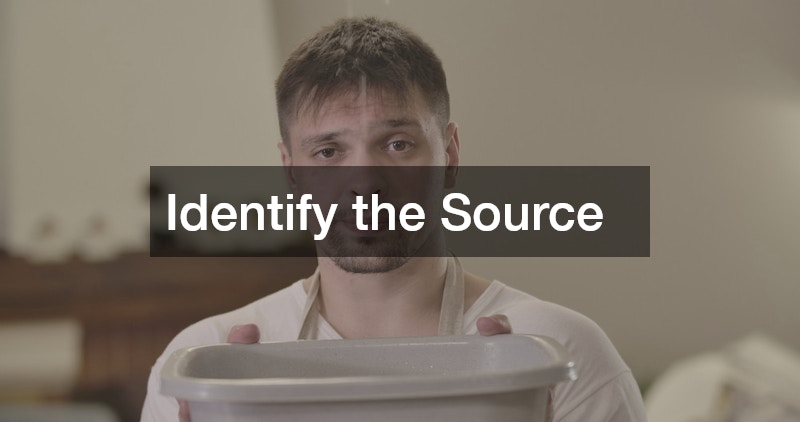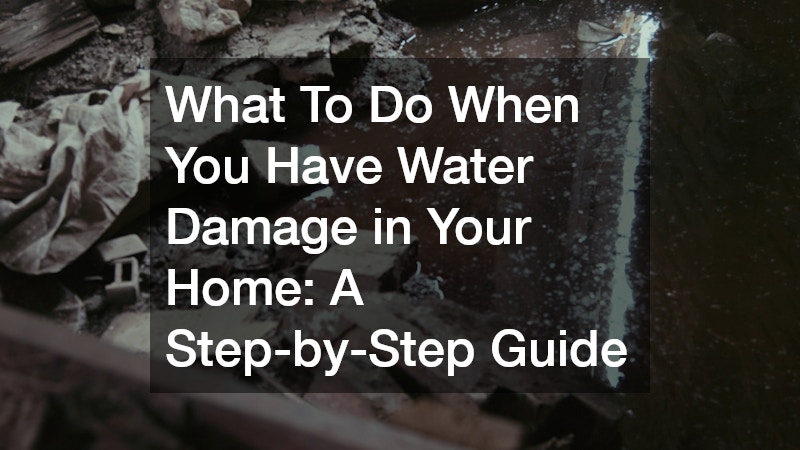Water damage is one of the most frustrating issues a homeowner can face. Whether it’s from a burst pipe, a leaking roof, or a natural disaster, the effects can be both immediate and long-lasting. Acting quickly and effectively is essential—not only to minimize damage but also to prevent mold growth and maintain the safety of your living space. This guide walks you through the key steps to take when you discover water damage in your home.
1. Ensure Safety First
The first priority when facing any kind of water damage is your personal safety. Before you do anything else:
-
Turn off the electricity in the affected area, especially if water levels are rising or touching electrical outlets.
-
Avoid wading through standing water, particularly if you suspect it’s been contaminated by sewage or chemicals.
-
Wear protective gear like rubber boots and gloves if you need to enter the area.
Once it’s safe to enter, begin assessing the extent of the damage.
2. Identify the Source
Pinpointing the source of the water is critical. Is it clean water from a broken pipe, gray water from an appliance, or black water from sewage backup? Each type requires a different response and cleanup protocol.
If you can identify the source and stop it safely—such as shutting off a water valve—do so immediately. If it’s related to heavy rainfall or flooding, take precautions to block further entry of water using sandbags or plastic sheeting.
3. Document the Damage
Before any cleanup or repairs begin, thoroughly document the damage:
-
Take clear photos and videos of all affected areas, including walls, floors, furniture, and personal belongings.
-
Create a written inventory of damaged items, noting their condition and approximate value.
This documentation can be vital when dealing with insurance companies or water damage restoration companies. It helps prove the extent of the damage and ensures you’re fairly compensated for your loss.
4. Contact Your Insurance Provider
As soon as the immediate danger has passed and you’ve documented the damage, notify your homeowners insurance company. Many policies cover sudden water damage, such as from a burst pipe or roof leak, but not all will cover flood damage.
Be ready to provide:
-
A description of what happened
-
Photos or videos of the damage
-
A list of affected items
-
Any steps you’ve already taken to mitigate further damage
An adjuster may need to visit your home to assess the situation in person. Don’t start major repairs until they’ve completed their inspection unless you’re addressing urgent safety issues.
5. Begin Water Removal and Drying
Time is of the essence when it comes to removing water. The longer moisture lingers, the greater the risk of mold and structural damage. Start by:
-
Using a wet/dry vacuum to remove standing water, if you have one
-
Blotting and mopping floors to soak up as much water as possible
-
Opening windows and using fans to encourage air circulation
-
Running a dehumidifier to help pull moisture out of the air
If the water damage is extensive, you may need to call professional water damage restoration companies to take over. They have industrial-grade equipment and expertise to fully dry out your home and prevent further issues.
6. Discard Damaged Items Responsibly
Some items can be salvaged; others may need to be thrown away. Start by separating what’s clearly ruined from what might be saved:
-
Porous materials like carpets, insulation, and drywall often need to be replaced if saturated.
-
Non-porous items like glass, metal, or plastic can usually be cleaned and disinfected.
-
Upholstered furniture and mattresses may harbor mold and bacteria if they’ve absorbed too much moisture.
Dispose of items following local guidelines, especially for things like electronics or appliances.
7. Clean and Disinfect Thoroughly
Once standing water is gone and the area is drying, focus on cleaning and disinfecting:
-
Scrub all affected surfaces with soap and water
-
Use a disinfectant solution to kill bacteria and mold spores
-
Pay special attention to areas behind walls and under flooring if moisture has seeped in
Professional water damage restoration companies often offer mold remediation services, which can be especially important if the damage was hidden or prolonged.
8. Repair and Restore
Now that your home is dry and clean, you can start rebuilding. This may involve:
-
Replacing damaged drywall, baseboards, or flooring
-
Repainting affected areas
-
Restoring or replacing cabinetry and fixtures
Depending on the extent of the damage, restoration could take anywhere from a few days to several weeks. Prioritize structural repairs before cosmetic improvements.
Dealing with water damage is never easy, but taking the right steps in the right order can make a huge difference. From initial safety to thorough drying, cleaning, and restoration, each stage plays a role in protecting your home and health. In severe cases, don’t hesitate to reach out to water damage restoration companies—they bring the tools and expertise needed to restore your home quickly and correctly.

